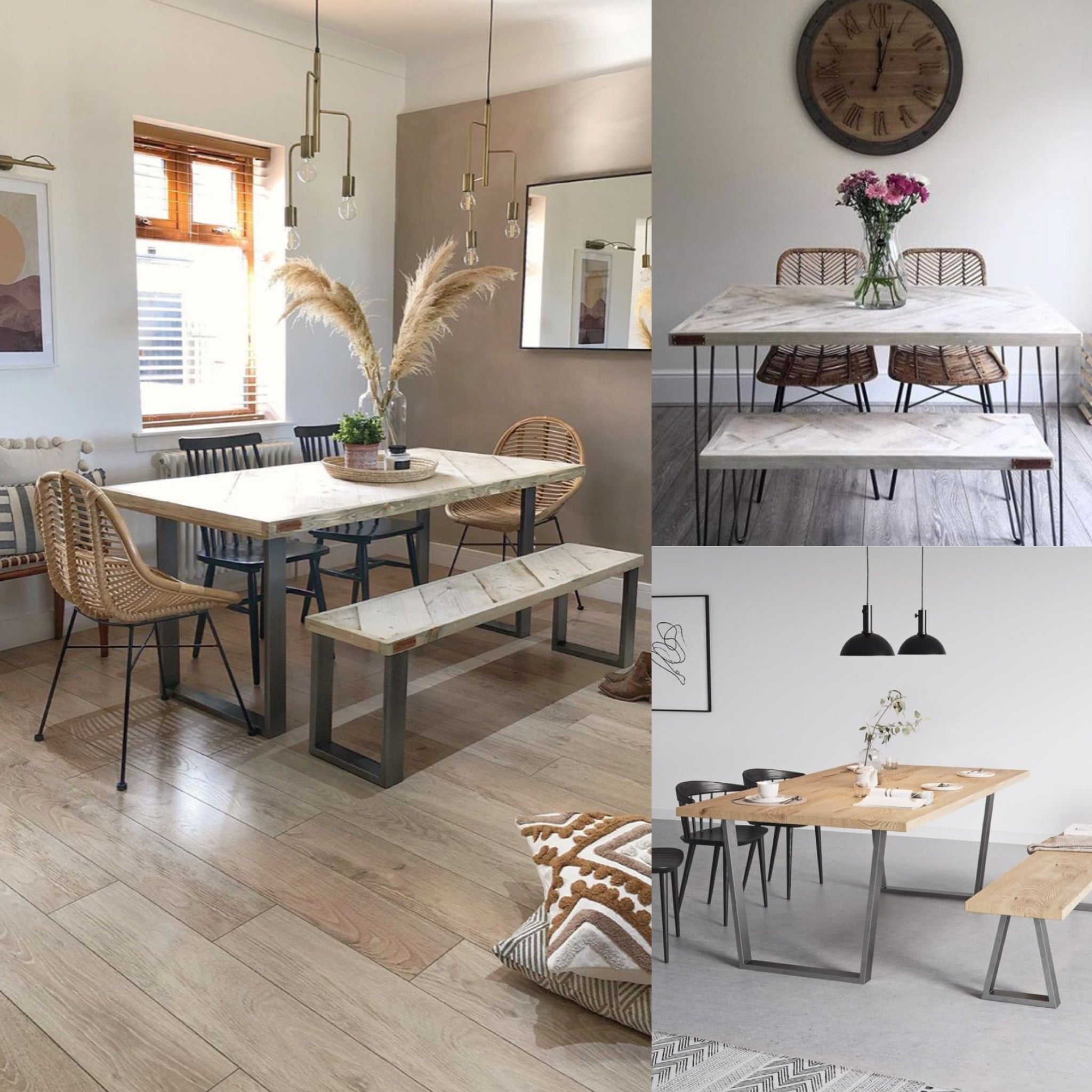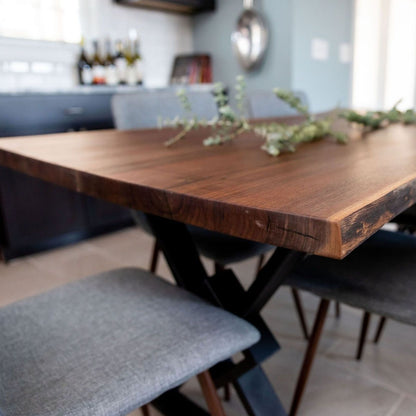From Typical to Modern: Discover the Suitable Eating Room Table Legs for Your Design
The selection of eating area table legs plays a pivotal function in specifying the general personality of your room, bridging the void in between standard workmanship and contemporary appearances. While classic styles such as cabriole and transformed legs evoke a sense of classic elegance, modern styles like barrette and geometric choices offer a possibility for striking visual rate of interest. Evaluating the right balance between these styles needs a nuanced understanding of your existing décor and individual preference. As you think about these elements, the question remains: how can you flawlessly integrate these diverse leg styles to create a harmonious dining experience?
Understanding Table Leg Styles
The variety of dining-room table leg styles can substantially affect both the appearances and capability of the room. Each leg style contributes unique practical features and visual elements, accommodating varied design choices and usage requirements. Recognizing these designs is important for choosing the ideal dining table that lines up with your general interior design vision.
As an example, tapered legs provide a tidy, traditional look that can improve a space's style, while pedestal bases supply security and make the most of legroom, making them perfect for smaller spaces. Barrette legs, a characteristic of mid-century modern-day design, introduce a commercial style, permitting for an airy, open feel. Trestle legs evoke rustic charm, giving robust support and a sense of eternity.
Wood legs can bring warmth and structure, whereas metal choices usually communicate a streamlined, contemporary vibe. Ultimately, understanding table leg designs is vital for developing a natural eating area that shows individual design while guaranteeing usefulness and convenience.
Conventional Table Leg Options
When picking dining-room table legs, standard choices commonly embody ageless beauty and workmanship. These layouts reflect a rich heritage and a dedication to high quality, making them excellent for those who appreciate traditional appearances.
One of the most famous typical leg styles is the cabriole leg, defined by its elegant curved shape. This style usually features decorative makings and is most typically discovered in Queen Anne and Chippendale furnishings. An additional prominent alternative is the transformed leg, which flaunts a collection of smooth, rounded forms that provide a classic look while preserving stability.
Moreover, the straight leg, while straightforward, uses a sturdy and basic structure that can mix flawlessly with a selection of tabletop designs. For those drawn to ornate detailing, claw-and-ball feet legs stimulate a sense of grandeur and can function as a sensational focal point in any type of eating room.
Last but not least, stand bases, although not purely legs, give an alternate typical choice that enables for adequate legroom and can be perfectly carved. Each of these conventional leg styles adds to the overall setting of a dining area, marrying function with visual charm.

Modern Table Leg Styles
Modern table leg designs provide a varied variety of styles that highlight cutting-edge products and tidy lines. These layouts typically focus on capability while functioning as striking prime focus within a dining area. Minimal aesthetic appeals prevail, with legs crafted from materials such as steel, glass, and engineered wood, which add to a ventilated and contemporary feeling.
One popular design his response is the barrette leg, defined by its slender, conical structure that offers security without overwhelming the table top (dining room table legs). This style is commonly discovered in mid-century modern-day furnishings and can effortlessly enhance numerous table shapes. Another fad is making use of geometric shapes, where legs may handle angular or unbalanced types, adding aesthetic interest and a touch of virtuosity

Mixing Designs for One-of-a-kind Rooms
Commonly, house owners look for to create special dining rooms that show their personal style by blending various style aspects. This strategy permits the incorporation of diverse appearances, causing a harmonious yet distinct setting. Pairing a rustic wood table with streamlined, modern metal legs can develop an appealing contrast that boosts the area's overall appeal.
Furthermore, incorporating vintage table legs with modern table tops can evoke a sense of background while keeping a modern-day perceptiveness. Such combinations not only display private taste however additionally urge creativity, allowing house owners to curate a space that really feels both personal and inviting.
Color plays a vital function in this blending procedure; choosing table legs that complement or contrast with the existing color design can improve aesthetic rate of interest. For instance, whitewashed legs can soften the daring of a dark table surface, creating a well balanced visual.
Tips for Selecting the Right Legs
Selecting the right table legs is vital for achieving both capability and visual appeal in your dining space. Begin by considering the total design of your space. Conventional setups gain from legs that feature detailed makings or transformed styles, while contemporary spaces may call for streamlined, minimalist styles.
Following, assess the height and security of the legs. dining room table legs. Common eating tables range in between 28 to 30 inches in elevation, so make certain the legs enhance this dimension for comfort. In addition, durable products, such as wood or metal, can boost security and longevity
Review the leg form too-- alternatives include directly, tapered, or pedestal styles. Straight legs provide a traditional appearance, while tapered legs can add a touch of style. Pedestal bases give adequate legroom and are suitable for smaller sized spaces.
Verdict
In recap, choosing the resource suitable dining-room table legs calls for mindful consideration of both modern and typical designs. Standard choices such as cabriole and transformed legs provide ageless style, while modern designs like barrette and geometric shapes give a contemporary touch. By integrating leg style, elevation, and product with the general decor, a natural and inviting atmosphere can be Continue attained. Ultimately, the chosen table legs should mirror the preferred aesthetic, boosting the eating experience within the space.
The variety of eating space table leg styles can significantly affect both the looks and functionality of the room. Eventually, understanding table leg designs is necessary for creating a cohesive dining location that reflects individual style while making certain practicality and comfort.One of the most famous conventional leg designs is the cabriole leg, characterized by its elegant curved form. Straight legs offer a classic look, while tapered legs can include a touch of style.In summary, picking the suitable dining space table legs needs careful consideration of both traditional and contemporary styles.